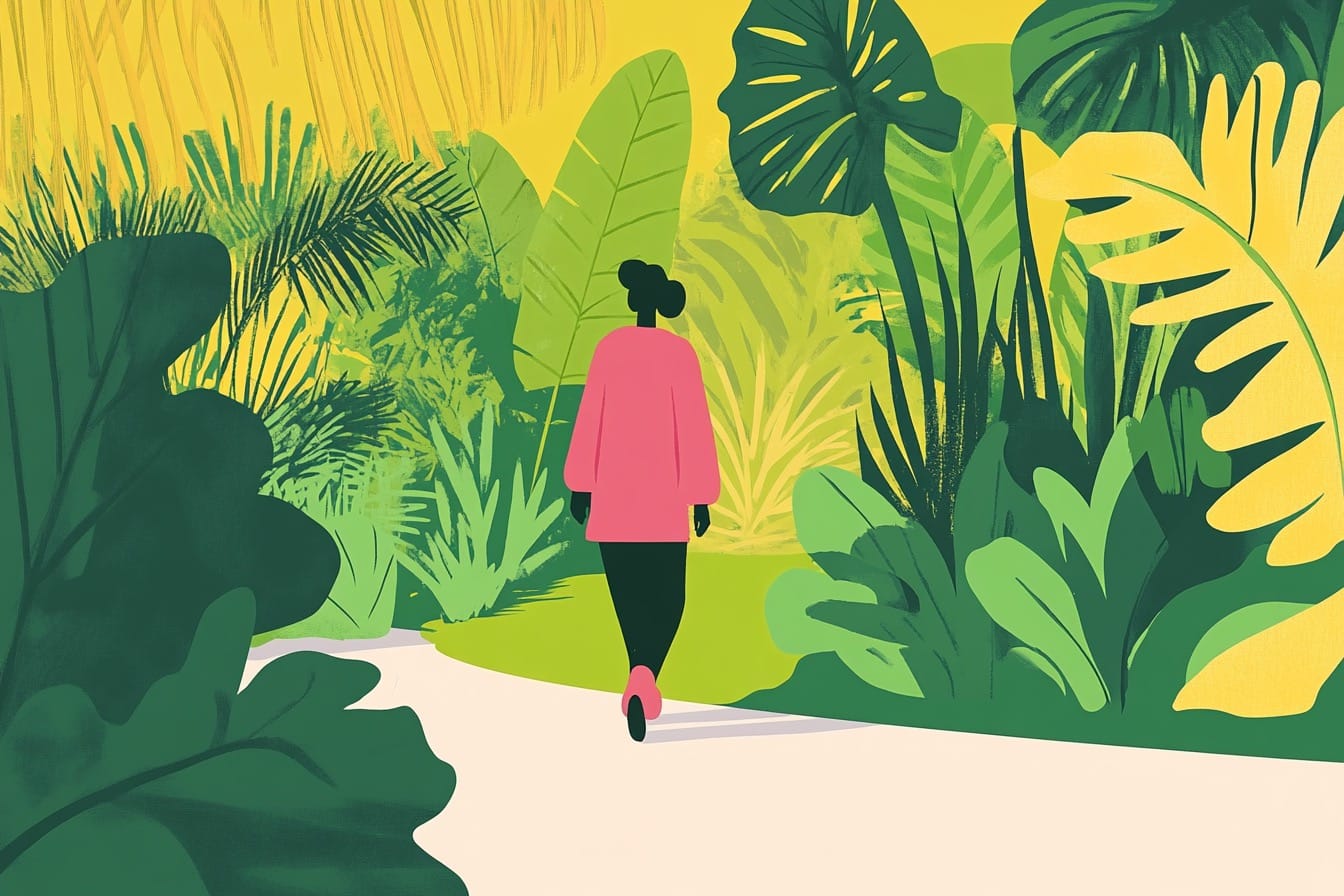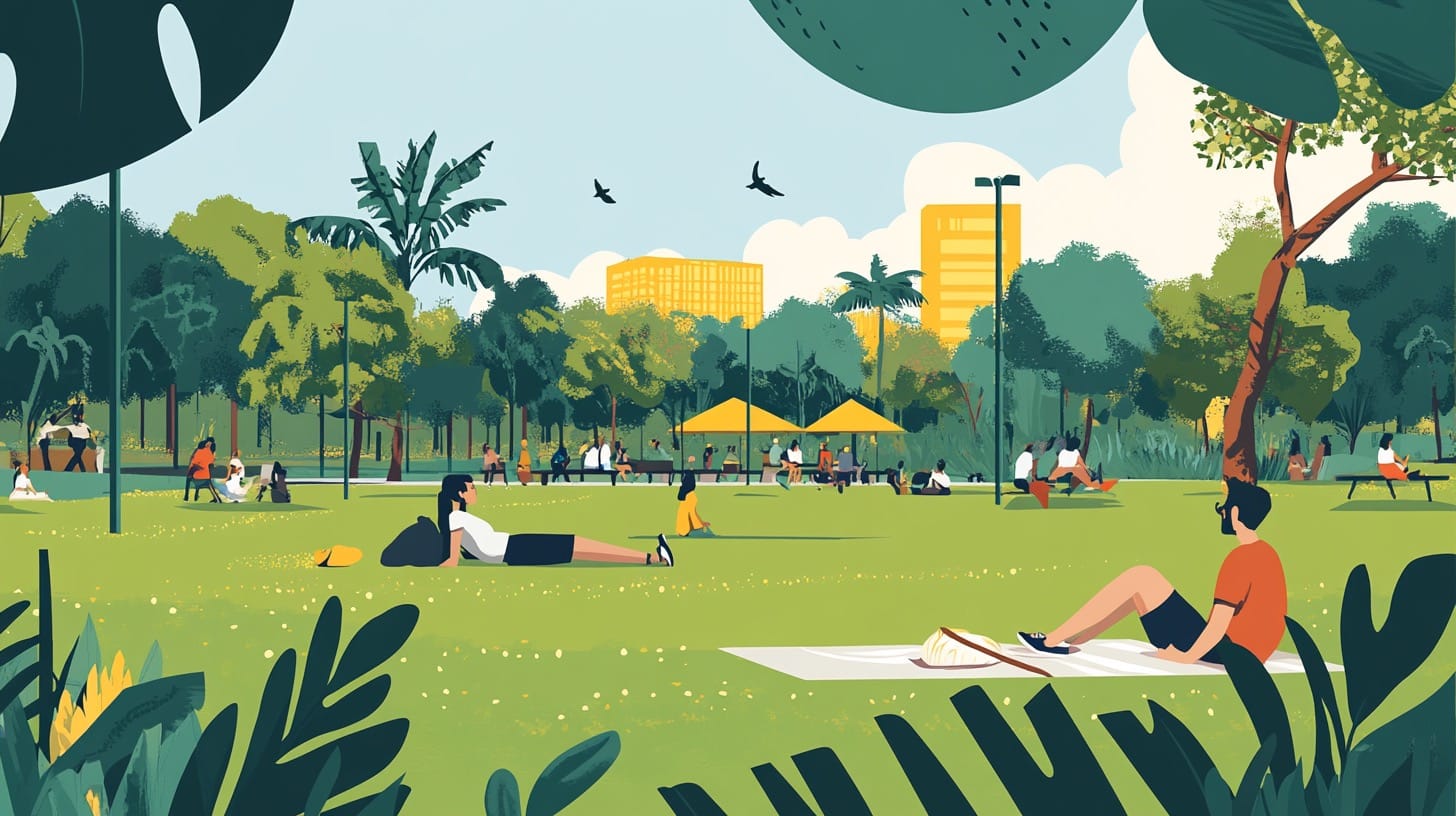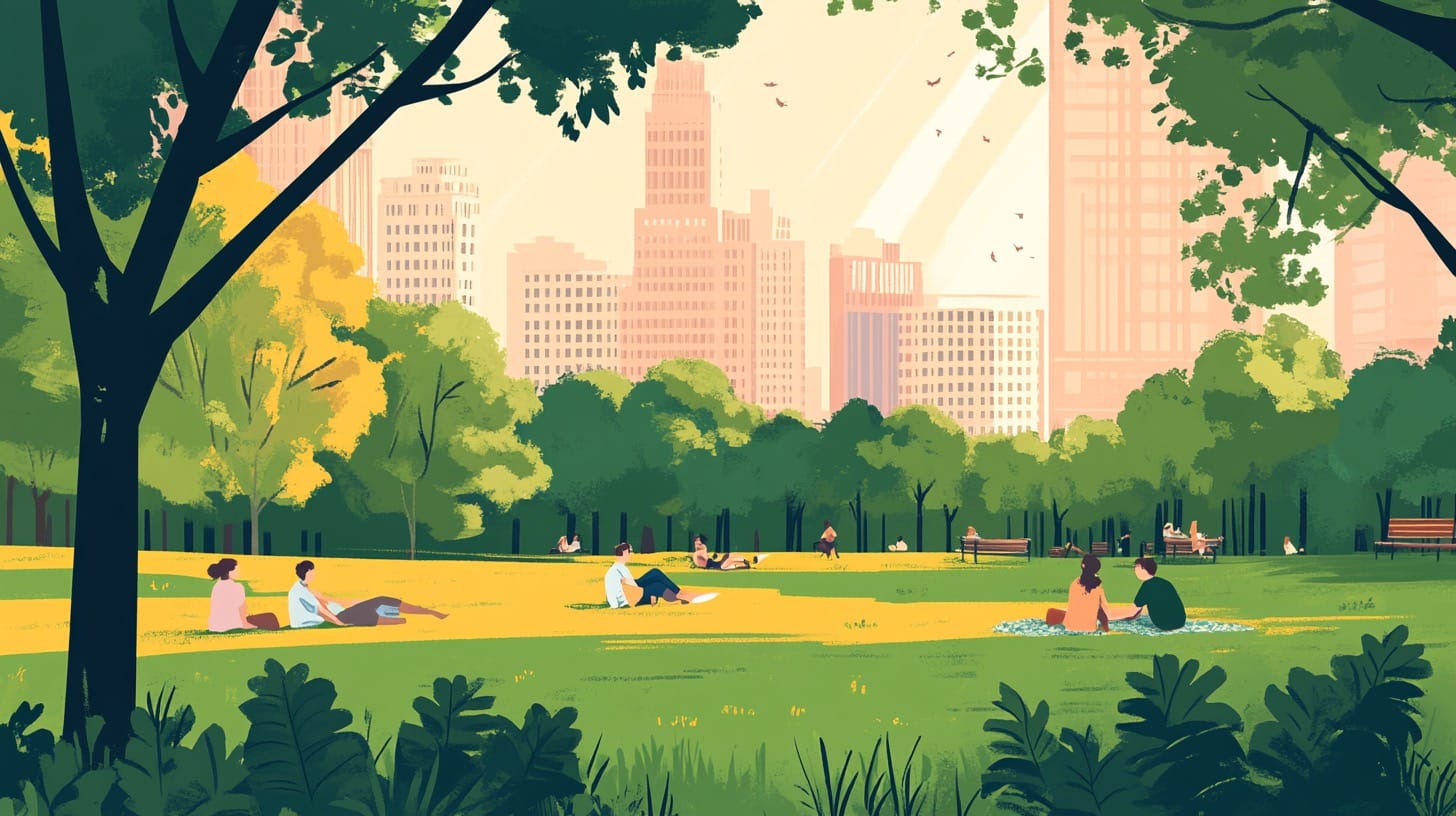Does Exposure to Green Spaces Relieve Anxiety?
Spending time in green spaces or even just having a view of nature can significantly reduce anxiety and stress, improving overall mental health and well-being.

The relationship between exposure to green spaces and mental health, particularly anxiety, has garnered increasing attention in recent years.
Various studies have explored how green spaces might alleviate anxiety and other mental health issues, shedding light on the potential mechanisms and benefits.

Reduced Risk of Anxiety and Depression
Living near green spaces like parks can considerably lower the risk of developing anxiety and depression.
Long-term exposure to residential green spaces is associated with reduced odds of these mental health conditions, as well as lower usage of related medications .
Additionally, higher levels of neighborhood green space are linked to significantly lower levels of anxiety and depression symptoms . Imagine waking up and seeing a park from your window; it could be more beneficial than you think!

Perceived and Objective Green Space Benefits
Both perceived abundance and objective measures of green space (such as the Normalized Difference Vegetation Index, or NDVI) are associated with lower anxiety and depression scores, even after adjusting for sociodemographic and pandemic-related stressors .
Interestingly, simply having a view of green spaces from your home is connected to a lower risk of anxiety and depression . This underlines the importance of incorporating greenery into urban design, offering natural views and opportunities for contact with nature to city dwellers.
Mechanisms of Stress Reduction
Green spaces act as natural stress relievers by reducing physiological stress markers.
Spending time in green environments has been shown to lower salivary cortisol levels, a biomarker for stress . These spaces also facilitate recovery from physiological stress, improve cognitive performance, and enhance emotional resilience by promoting positive emotions and social cohesion . When was the last time you took a stroll in the park?

Impact of Green Space Quality and Usage
The quality and frequency of use of green spaces are crucial for mental health outcomes. High-quality green spaces, along with frequent visits, are significantly associated with better mental health, including lower anxiety and depression .
Spending just 30 minutes per week in a green space can lead to significant reductions in depressive symptoms and anxiety.
Imagine the difference this could make if every neighborhood had a park or green area.
Therapeutic Benefits
Green spaces aren't just visually pleasing; they are also integral to various forms of therapy, including wilderness therapy, social and therapeutic horticulture, and ecotherapy.
These therapeutic interventions can improve mental health outcomes significantly by reducing symptoms of anxiety and depression while enhancing self-esteem and cognitive function.

Key Takeaways
- Reduced Anxiety and Depression: Living near green spaces can significantly reduce the risk of anxiety and depression, as well as lower the usage of related medications.
- Stress Reduction: Spending time in green spaces reduces stress levels, lowers cortisol, and boosts serotonin and dopamine, contributing to better mental health.
- Green Space Quality: The quality and usage of green spaces play crucial roles in these mental health benefits.
Sources:
M. Gascon et al. "Long‐term exposure to residential green and blue spaces and anxiety and depression in adults: A cross‐sectional study." Environmental Research, 162 (2018): 231–239. https://doi.org/10.1016/j.envres.2018.01.012.
Rebecca Reece et al. "Exposure to green space and prevention of anxiety and depression among young people in urban settings: a global scoping review." Journal of Public Mental Health (2021). https://doi.org/10.1108/JPMH-02-2021-0030.
C. Reid et al. "Perceptions of green space usage, abundance, and quality of green space were associated with better mental health during the COVID-19 pandemic among residents of Denver." PLoS ONE, 17 (2022). https://doi.org/10.1371/journal.pone.0263779.
C. Thompson et al. "More green space is linked to less stress in deprived communities: Evidence from salivary cortisol patterns." Landscape and Urban Planning, 105 (2012): 221-229. https://doi.org/10.1016/J.LANDURBPLAN.2011.12.015.
O. Braçe et al. "Is a View of Green Spaces from Home Associated with a Lower Risk of Anxiety and Depression?" International Journal of Environmental Research and Public Health, 17 (2020). https://doi.org/10.3390/ijerph17197014.
A. Kanelli et al. "Engaging the Senses: The Association of Urban Green Space with General Health and Well-Being in Urban Residents." Sustainability (2021). https://doi.org/10.3390/su13137322.